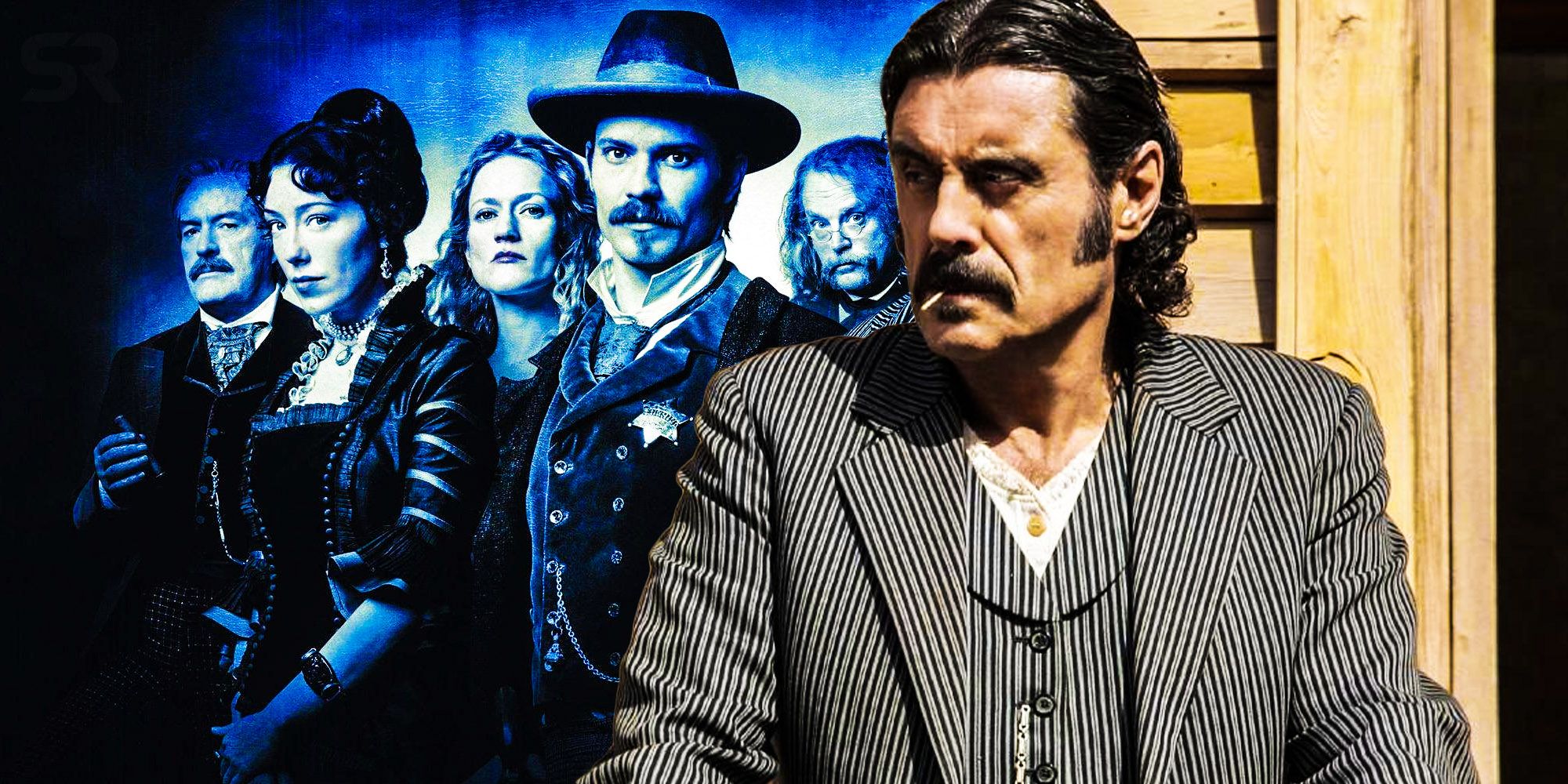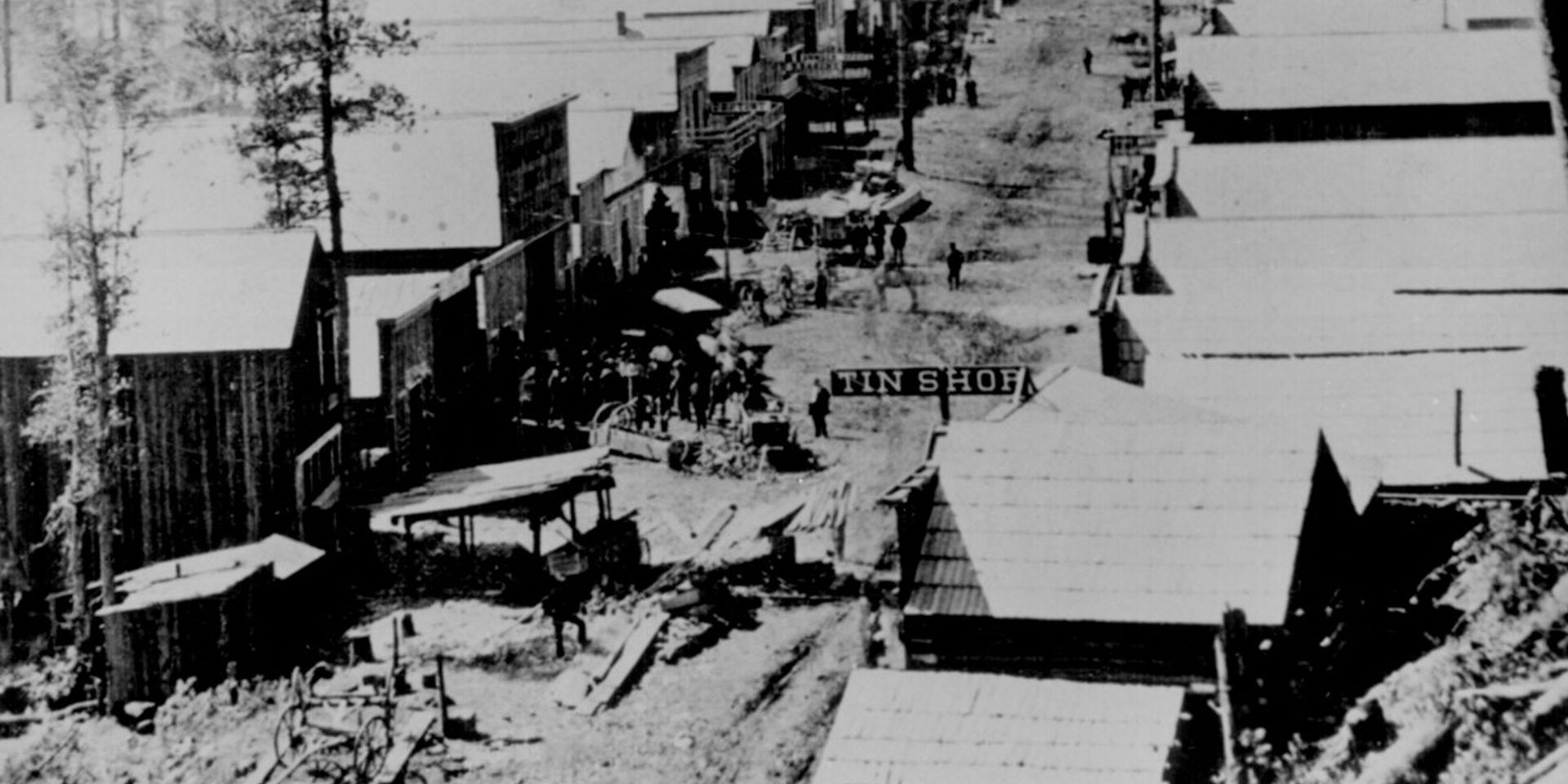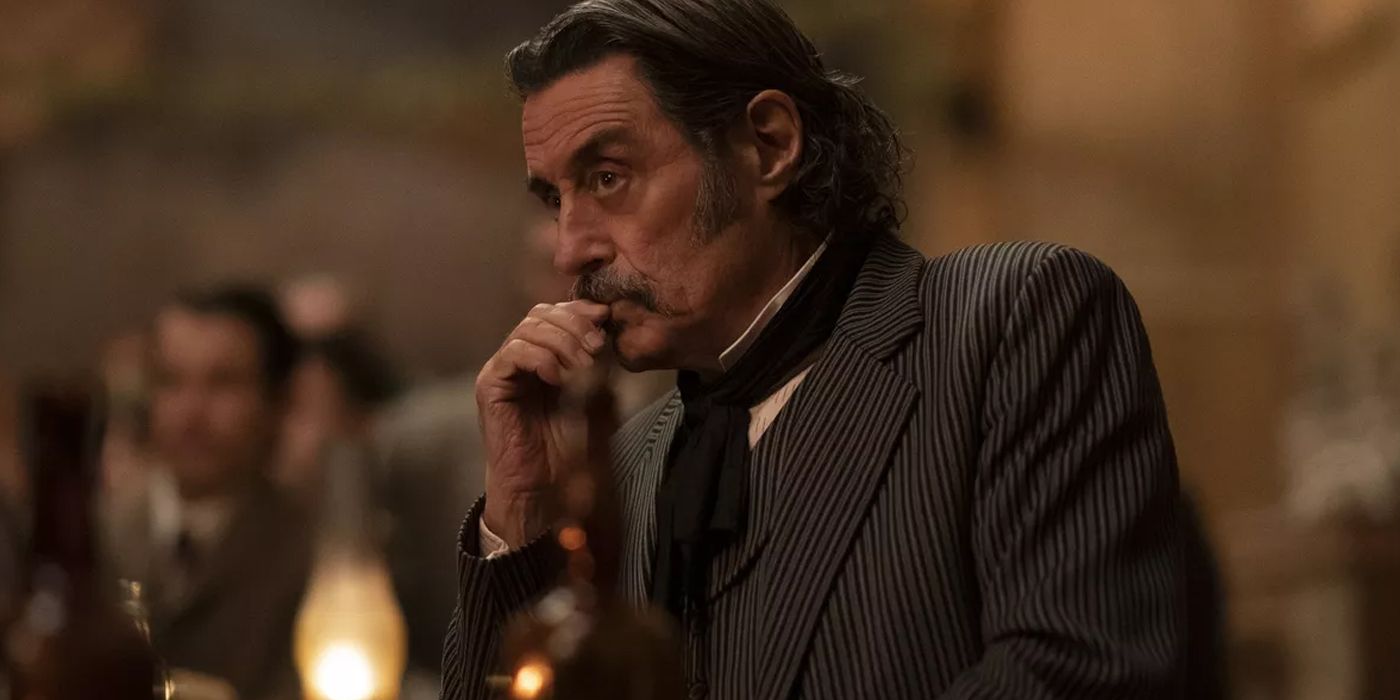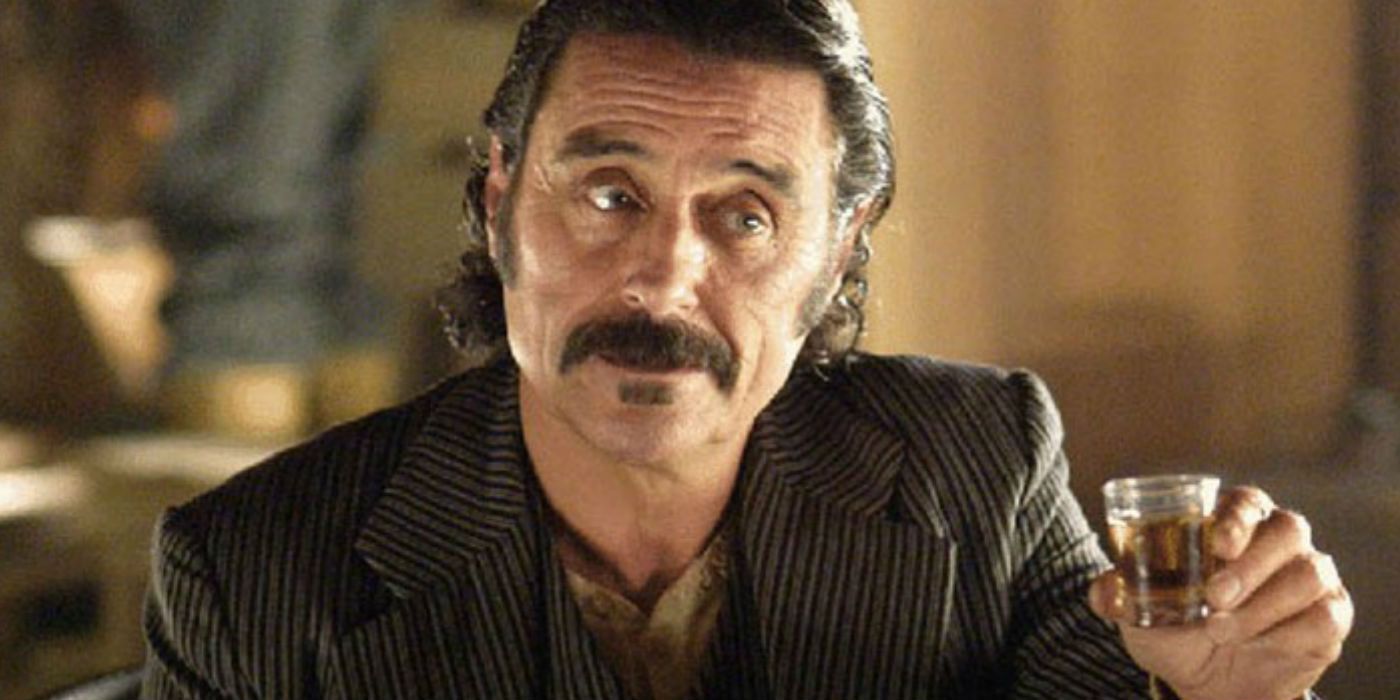Ian McShane's Al Swearengen in Deadwood is one of the most memorable characters in TV history and, like many characters on the show, he was based on a real-life resident of the historic frontier town. The real-life Swearengen was, like his fictional counterpart, the owner of the Gem saloon and brothel in Deadwood. That said, series creator David Milch and the other writers made several changes to the historic figure to make him a more compelling and sympathetic character.
Al Swearengen is often considered to be one of the complex antiheroes who defined the 2000s TV "Golden Age", alongside Tony Soprano or Walter White. He is established very early on in Deadwood as a conniving, ruthless businessman with a taste for profanity that borders on almost poetic. The complex role established McShane as a major actor and won him a Golden Globe and an Emmy nomination.
As Deadwood's story unfolds, Swearengen frequently butts head with Timothy Olyphant's Seth Bullock and his business rival Cy Tolliver (Powers Boothe). He also acts to help bring the camp together and develop into a more organized society, holding the first-ever town council meeting in the Gem and bribing legislators to legally recognize Deadwood. As the series progresses, Swearengen becomes more of a heroic figure, fighting to protect the town from the big money of George Hearst. In similar historic narratives like The Aviator, Deadwood also changes some key elements of Swearengen's life for dramatic purposes. These include his background, the timeline of his years in Deadwood, and the amount of influence he had. Deadwood made similar changes to most of the characters that appeared; for instance, both Trixie and Doc Cochrane were composites of multiple real-life people. Ultimately, the changes to Swearengen made him a more dramatically compelling figure.
The Real Al Swearengen's Life
Al Swearengen was born in 1845 alongside his twin brother Lemuel in what was then the Iowa Territory. He reportedly led a homebound life until the age of 30, when he moved to Deadwood and his first business was a saloon called the Cricket. In 1877 he closed it down and opened the Gem Theater, which despite its name was a dance hall, saloon, and brothel. This rough nature is depicted in Deadwood, where The Gem is not exactly Cheers. The Gem was a successful business, sometimes making as much as $10, 000 in one night.
Swearengen was ruthless in his pursuit of profit and was particularly cruel to the women he employed, controlling them through physical and psychological abuse. He was frequently arrested for assault and disturbing the peace. He deceived many young women as to what their work would be like when they came to Deadwood, before forcing them into prostitution. Interestingly, one of Swearengen's first dancers was Martha Jane Cannary, who would later become known as Calamity Jane. Jane is a major character in Deadwood portrayed by Robin Weigert, but the series doesn't explore her connection to Al in detail. The real Swearengen also had a turbulent personal life, going through women almost as fast as Don Draper. He married a woman named Nettie, who came with him to Deadwood in 1876 but quickly divorced him, citing spousal abuse. Swearengen married twice more while living in the frontier town, with both also ending in divorce. The Gem burned down in 1879 but was rebuilt as a larger and more extravagant saloon. In 1899, however, it burned down again and was not rebuilt.
After the final fire, Swearengen left Deadwood and married Odelia Turgeon. He died in 1904 in Denver at age 59. There are conflicting reports of his passing, with some stating he died penniless trying to hop a train. However, recently rediscovered newspaper accounts suggest Swearengen was murdered, dying of a head wound. If Deadwood had continued into the 20th century, it could have had a much more violent ending than the elegiac final minutes of Deadwood: the Movie.
Deadwood's Biggest Changes
The timeline of Al Swearengen's life is very different in Deadwood compared to the real-life figure. The series changes Swearengen's background, making him English instead of Dutch to match actor Ian McShane's British heritage. As part of this change, in the series Al is short for Albert instead of Alfred. The stories that Deadwood's Swearengen tells as part of his famous monologues suggest a much more colorful backstory than the real man - although perhaps Al shouldn't be taken at his word. The TV series also changes the chronology of Al's ownership of the Gem. The first season of Deadwood includes the famous events of 1876 that made the town notorious, including the killing of "Wild" Bill Hickock. This incident has been depicted in film numerous times, with everyone from Cary Grant to Jeff Bridges playing Wild Bill.
However, while Deadwood depicts the Gem as being an established saloon during this period, in reality, it didn't open until 1877. The series likely exaggerates the extent of Swearengen's political powers and ambitions too. The real Swearengen was indeed able to navigate the rough-and-tumble world of the Dakota territory, which likely included its fair share of bribes and dirty deals. The Gem was one of the few establishments that was able to avoid the real-life Seth Bullock's attempt to "clean up" the camp. There's little evidence of Al being the kind of community leader and mastermind he was in Deadwood.
Like canceled shows such as Veronica Mars, Deadwood received a revival in the form of a TV movie. It moves further from history, avoiding the topic of the Gem burning down and being rebuilt during the gap between the series and the film, which takes place in 1889. It gives Swearengen, on the verge of death from liver failure, a graceful departure, promising to leave the Gem to Trixie. As noted, the real Swearengen lived for another fifteen years and had no sentiment towards the women who worked for him. These changes show how Deadwood made Swearengen more sympathetic.
How Deadwood Made Al Swearengen A More Compelling Character
The real Al Swearengen was by all accounts, a brutal man and abuser who took advantage of desperate women and men. Early episodes of Deadwood don't shy away from this, showing Al beating Trixie, ordering the murders of multiple men and encouraging attacks on local Indigenous groups. However, he transitions into more of an antihero, a trajectory followed by many villainous characters like the MCU's Loki. This is especially true towards the series' end as he works to defend the community from Hearst's moneyed interests.
The real Swearengen may have had his own sentimental side and inner troubles, but it's hard to tell from the historical record. Milch's writing and McShane's performance flesh out a historical bully into a rich character who is motivated as much by trauma and fear as by greed. The tension between Swearengen's frequent brutality and coarseness and his more vulnerable care for his community makes him a compelling figure. This fits in with Deadwood as a whole, which showcases the tender and optimistic moments of forming a community alongside the brutality of the Old West.
Al Swearengen captivated viewers of Deadwood and helped propel Ian McShane on to more major roles in John Wick and American Gods as well as a cameo in Game of Thrones. The character had a real historical basis but Deadwood changed many elements to make for a more compelling narrative. Ultimately, it was the series' writing and McShane's performance that made Al Swearengen so memorable.




